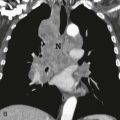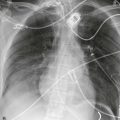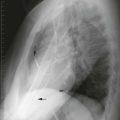Three relatively recent imaging techniques, computed tomography (CT), ultrasound (US), and magnetic resonance imaging (MRI), have greatly improved thoracic imaging. In all conventional x-ray techniques, the x-ray beam passes through the patient, superimposing all structures in its path onto an x-ray film or detector (projection image, two-dimensional image). Cross-sectional scanning techniques “slice” the patient open, providing a look “inside,” eliminating superimposition. These images are the product of individual digital readings, from multiple angles, synthesized into a digital image. The digital data can be processed to improve tissue contrast and brightness or to view the anatomy in various planes and in three dimensions.











Stay updated, free articles. Join our Telegram channel

Full access? Get Clinical Tree








